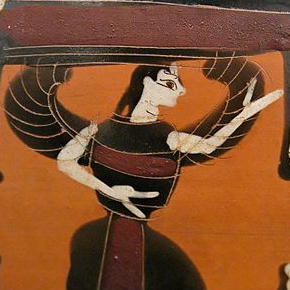Xray::BLA::Mask¶
NAME¶
Xray::BLA::Mask - Role containing mask creation steps
METHODS¶
General methods¶
mask
Create a mask from the elastic image measured at the energy given by
energy.$spectrum->mask(@args);where the arguments are given using fat commas, as in
verbose=0, save=>0, animate=>0>.The arguments are:
verboseWhen true, this causes messages to be printed to standard output with information about each stage of mask creation. Only used in CLI mode.
saveWhen true, this causes an image file to be saved at each stage of processing the mask. Usually only used in CLI mode.
animateThis causes a properly scaled animation to be written showing the stages of mask creation.
elasticExplicitly specify a file to use as the elastic image. In CLI mode, this is usually determined algorithmicly, but in Metis it is taken from one of the image lists on the Files page.
unity??
passThis is a counter for multiple passes of thesocialstep.
verticalWhen true, this tells thesocialstep to only consider pixels directly above and below.
plotWhen true, this will generate a plot at each stage of mask creation along with a pause for viewing it. This is only used in CLI mode.
writeWhen given a filename, an image file will be written at the end of a mask creation step. When given a false value, the image file will be written.These output image files are gif on linux and tif on Windows.
This method is a wrapper around the contents of the
stepsattribute. Each entry instepswill be parsed and executed in sequence.
check
Verify that the elastic image file exists, can be read, and be imported as an image file. This sets theelastic_fileandelastic_imageattributes.
remove_bad_pixels
This removes the bad pixels from the map using thebad_pixel_maskattribute. Some of the steps,arealfor example, can reinsert a bad pixel, so it is necessary to follow each step with this method to ensure that the bad pixels are not used in HERFD processing.
do_step
A wrapper around the various mask processing steps. This calls the various steps, manages screen messages, sets some attributes, manages plotting in CLI mode, and manages saving images of steps in the mask creation process when in CLI mode. In Metis, this is usually called directly without calling themaskmethod.
Methods for the steps of mask creation¶
bad_pixels
Remove pixels that are larger than the value of the
bad_pixel_valueattribute and smaller than theweak_pixel_valueattribute. This must be the first step in mask processing. This also sets thebad_pixel_maskattribute, which identifies the pixels marked as bad pixels.Controlling attributes:
bad_pixel_value,weak_pixel_value
gaussian_blur
Apply an approximate Gaussian blur filter to the image. Set all pixels above a threshold value to 1, setting all below that value to 0. This is a simple convolution with this kernel:
1 / 1 2 1 \ ---- ( 2 4 2 ) 16 \ 1 2 1 /The size of the threshold depends on the intensity of the relevant part of the image. Very bright, spurious spots will pass through this filter.
Controlling attribute:
gaussian_blur_value
useshield
Construct a shield used to mask out a region of the elastic image associated with fluorescence or some other source of signal.
Shields are constructed sequentially. The first N steps do not have a shield -- more specifically, the shield is empty. The next shield uses the mask from N steps prior to block out this signal. The following shield adds the mask from N steps back to the shield of the previous step. Subsequent steps accumulate the masks from N steps back, adding them to their shields.
All pixels under the shield are then set to 0.
Controlling attribute:
shield
polyfill
After the Gaussian blur or other filtering step to remove all of the outlying pixels, the top-most and bottom-most pixels in each column are noted. Two polynomials are fit to this collection of points, one to the top set and one to the bottom set. The pixels between the two polynomials are turned on, yielding the final mask.
Controlling attributes: none.
lonely_pixels
Remove illuminated pixels which are not surrounded by enough other illuminated pixels.
Controlling attribute:
lonely_pixel_value
social_pixels
Include dark pixels which are surrounded by enough illuminated pixels.
Controlling attribute:
social_pixel_value
areal
At each point in the mask, assign its value to the median or mean value of a square centered on that point. The size of the square is determined by the value of the
radiusattribute.The median operation is not currently supported.
Controlling attributes:
operation,radius
multiply
Multiply the entire image by a scaling factor.
Controlling attribute:
scalemask
entire_image
Set every pixel in the mask to 1. This makes the "HERFD" using the entire image at each energy point. This is used for testing and demonstration purposes and is not actually a useful step for making high energy resolution data.
Controlling attributes: none
mapmask
(coming soon)
andmask
This is the final step in mask creation. It sets all non-zero pixels to 1 so that the mask can be directly multiplied by images at each data point in a HERFD scan.
Controlling attributes: none
LICENCE AND COPYRIGHT¶
Copyright (c) 2011-2014,2016 Bruce Ravel, Jeremy Kropf. All rights reserved.
This module is free software; you can redistribute it and/or modify it under the same terms as Perl itself. See perlgpl.
This program is distributed in the hope that it will be useful, but WITHOUT ANY WARRANTY; without even the implied warranty of MERCHANTABILITY or FITNESS FOR A PARTICULAR PURPOSE.
Xray::BLA and METIS are copyright © 2011-2014, 2016 Bruce Ravel and Jeremy Kropf – This document is copyright © 2016 Bruce Ravel
This document is licensed under The Creative Commons Attribution-ShareAlike License.
If this software and its documentation are useful to you, please consider supporting The Creative Commons.
